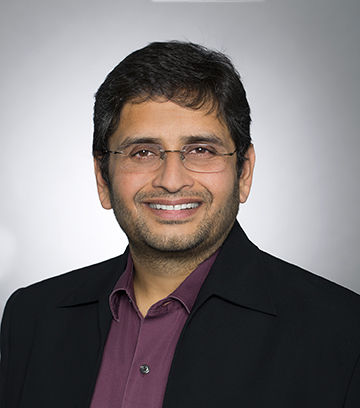
One of the things that excited me most about GroundTruth is its unique position in location marketing and advertising. GroundTruth has built some powerful products in the last couple of years, such as our Discovery and Brand Insights platforms, which allow brands to analyze foot traffic patterns and trends. Ads Manager, our self-serve platform, is another great product as it’s the first of its kind to allow visitation-driven location and audience targeting. We’ve also created other products that are lesser known to the public, such as Location Manager, which allows advertisers to request polygon geometry (in-store, on-lot and on the retail block) around their store locations.
One of my immediate goals for 2019 is to integrate these products and offer them as part of a bigger platform that can be used by big agencies as well as the small to mid-sized market. This will require us to focus on scaling our infrastructure and building a formidable team that can continue to scale for the next couple of years.
In your opinion, what differentiates GroundTruth from other companies in the location advertising space?
We differentiate ourselves by offering location and audience targeting built from our mapping technology called Blueprints, which offer much better visitation quality than rudimentary radial-based geofences. We also allow buyers to set visits as a campaign objective and offer disruptive business models like Cost Per Visit (CPV). Over the last couple of years, we have also tweaked our platform to optimize media buys for the lowest effective Cost Per Visit.
How do you see Cost Per Visit evolving?
Cost Per Visit is a disruptive concept that allows brands to optimize their ads based on observed visits to their brick-and-mortar location. Since 90% of retail transactions still happen offline, we believe location is the strongest signal of intent. For example, a very famous fast food brand sees almost 100M consumers walking into their stores, but they only see 10M searches for their brand online. That said, we see almost 19M unique in-person visits for that brand. In cases like restaurant, retail, and shopper marketing, CPV is an effective performance model that can capture consumers’ intent based on their location signal and then use online media to influence their behavior. While we’ve seen a lot of success with CPV, we have barely scratched the surface. There’s a lot more we want to do here, and we have big plans in 2019.
AI, Machine Learning, Blockchain, and Voice Tech are big buzzwords in our industry right now. What’s your perspective on how these technologies will play into location?
We’re heavily invested in machine learning. Today we see millions of monthly users on our platform globally and have built a mapping technology that allows us to enrich the data we receive. This data forms the core for building various location and audience segmentation and allows us to move to more predictive modeling. Machine learning is central to the success of GroundTruth and we continue to hire the best available talent to solve the toughest problems in this space.
Machine learning is central to the success of GroundTruth and we continue to hire the best available talent to solve the toughest problems in this space.
We’re also watching blockchain very closely. It has the potential to disrupt the ecosystem in a manner similar to what real-time bidding did a couple of years ago. Centralized and democratized records of transactions can be extremely valuable for a supply chain that sells digital goods. Our industry is fraught with fraudulent traffic, discrepancies in numbers among various players of the supply chain, etc. Blockchain can help weed out the noise in the digital ad tech system.
Finally, voice tech is a powerful human to machine interface concept, and may one day overshadow search as the primary gateway for the Internet. Eventually, location advertising could work with voice-enabled applications as another way for providers to reach new or existing users.
In your opinion, what does the future of location marketing look like? What will be the next big thing in 5 years?
Location marketing has a huge potential to offer effective marketing solutions for brands and retailers. Many of the buyers in these segments are beginning to realize the potential of visitation-based performance. However, more work still needs to be done to mature this solution. For example, unlike Cost Per Click or other online standards of measurement, Cost Per Visit is more complex, since the time between delivering impressions and measuring visits as an action is longer. Again, We strongly believe in the potential of location marketing and as a result, we’re continuing to invest in all aspects of the platform to strengthen our geomarketing solutions.
What excites you the most about working at GroundTruth?
One of the most exciting things about GroundTruth are the people who work here. Each office has its own unique culture but we are united by common goals. We also are a very data-driven company and although we are aiming to build location as a category, our data-driven culture keeps us pragmatic. I enjoy interacting with company stakeholders and learning from their experience.
One of the most exciting things about GroundTruth are the people who work here. Each office has its own unique culture but we are united by common goals.
What separates the engineering team at GroundTruth from previous teams you have worked on?
At GroundTruth, we have a combination of senior members, who are strong stewards of GroundTruth’s vision, and newbies, who are fresh out of college and are willing to work hard to improve their skills. We also offer a wide variety of tech stacks for engineers to augment their skills – including mobile development, machine learning, big data engineering, full stack web application, and large-scale high-frequency low-latency transaction systems. Our proposition is to allow talent to come and work on any of these technologies from any of our engineering locations – Mountain View, New York, Vancouver, Germantown, Shanghai, New Delhi, and London. These dispersed locations help us attract and cultivate talent from various parts of the world. This creates an interesting challenge in building a cohesive culture while maintaining a unique identity at each of these offices.
Interested in joining our product & technology team? View open positions!




